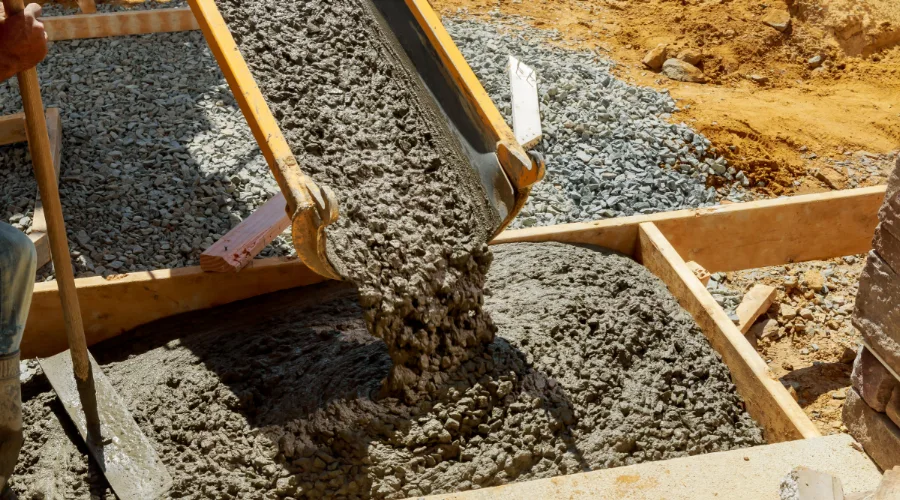Have you ever thought about how roads and buildings manage to hold up well against the heat and do not end up cracking? The secret is isolation joints. These joints allow parts to move with respect to each other and prevent failure. Isolation joints help systems achieve long-term stability, whether they are used in pavements or concrete slabs. Let’s get a closer view of why this is so important.
What are Isolation Joints?
An isolation joint is an expansion joint designed to isolate different sections of a structure to allow free movement without causing subsequent stress or damage. These joints also absorb expansion and contraction caused by thermal forces and vibration. They are generally filled with foam, rubber, bitumen, or other compressible material with proper sealing to prevent waste accumulation.
Why are Isolation Joints Important?
Allows Movement
Isolation joints allow materials to shrink, expand, or shift in response to environmental conditions without causing cracks or damage.
Prevent Damage
By allowing materials to move freely, isolation joints prevent the structure from cracking or sustaining other damage, which can affect its overall structural integrity and longevity.
Reduce Stress
They prevent the accumulation of concentrated stress, spreading the movement evenly throughout the structure, reducing the likelihood of serious damage.
Prevent Settling or Shifting
While some parts of the structure shift or settle, isolation joints allow movement between other sections without affecting the overall structure.
Enhance Durability
Isolation joints can absorb temperature fluctuations and soil movements, which makes them last longer.
Provide Safety
In seismic zones and extreme climatic conditions, isolation joints keep buildings safe by withstanding shear forces and shifts without collapsing.
Where Are Isolation Joints Used?
- In roads and highways pavements, they help to expand and contract with temperature differences to prevent cracking.
- Isolation joints allow a degree of movement for bridges in rolling and climatic changes, preventing damage.
- These joints separate sections of large buildings so they can move without damaging the walls or flooring.
- These joints permit floor movement to avoid cracking in concrete floors, such as in factories or large stores.
- Isolation joints help the tracks to expand and contract to maintain their condition.
- Dams and reservoirs have special joints that allow them to withstand variations in pressure to avoid cracking.
- Pipelines use these joints to combat pressure changes and temperature variations, which usually cause the pipe to break.
- Pavements and taxiways are provided with isolation joints to take care of differential movement and reduce wear and tear due to temperature changes.
Materials Used For Isolation Joints
- Isolation Joint Materials
- Foam
- Rubber
- Pre-formed Expansion Joint Strips
- Concrete or Asphalt: for pavement or slabs
- Joint Sealant: for sealing the joints
- Tools:
- Knife
- Measuring Tape
- Hammer
- Trowel
- Roller
How to Install Isolation Joints?
Plan the Joint Placement
Precisely plan where to place the isolation joints, and how far each joint should be. Joints are usually placed around the edges of concrete slabs or between different parts of a structure, and are typically spaced about 12 to 14 metres.
Prepare the Area
Make sure the area where you’ll put the joint is clean and dry, with no dirt or debris. Ensure that the ground or base under the concrete is flat and well-packed to avoid shifting later.
Placing Isolation Joint
Measure and cut the joint material— foam or rubber strips to make it fit the joint perfectly. Put the joint material around the edges or between sections of concrete, ensuring it fits snugly and stays in place.
Securing the Joint
To hold the material in place, glue, nails, or other fasteners can be used. This can vary depending on the joint material, as some joints can withstand the weight on their own.
Pouring Concrete or Asphalt

Once the joint material is secure, pour the concrete or asphalt around it. It should be noted that the joint material should not be displaced while pouring, and is firm enough to stay in place.
Finishing
Once the concrete or asphalt is poured, the surface should be smoothed using a trowel or roller to make it even. Allow the concrete to dry, and use a sealant to fill in the joint. This helps protect the joint, preventing dirt or water ingress.
Curing
Allow the concrete or asphalt to fully dry and cure before doing anything further. After that, the joints should be examined to ensure that they allow movement without issues.
Maintenance and Inspection of Isolation Joints
Regular Inspection
Regular inspections should be done to identify cracks, tears, or wear in the joint material. Ensure that there are no gaps between the joint material and the surface.
Keep Joints Clean
Promptly clean any dirt, leaves, water or other waste deposited on the joints that could potentially block the movement.
Resealing
Check for any sealant to ensure it remains intact without any damages. In case of damage, the sealant can be replaced with a new one.
Monitor Joint Movement
Ensure that the joints function properly by allowing expansion and contraction. Ensure that the functioning is even throughout the structure without causing compression.
Conclusion
To sum it up, isolation joints are crucial in construction because they provide controlled space for movement, preventing any structure from being damaged from thermal expansion, contraction, and settlement of ground. They help prevent damage such as cracks and misalignment in structures like buildings and roads. As long as isolation joints have been installed and maintained properly, they can protect the integrity and durability of the structure. These joints are essential for proper maintenance of buildings and roads.

